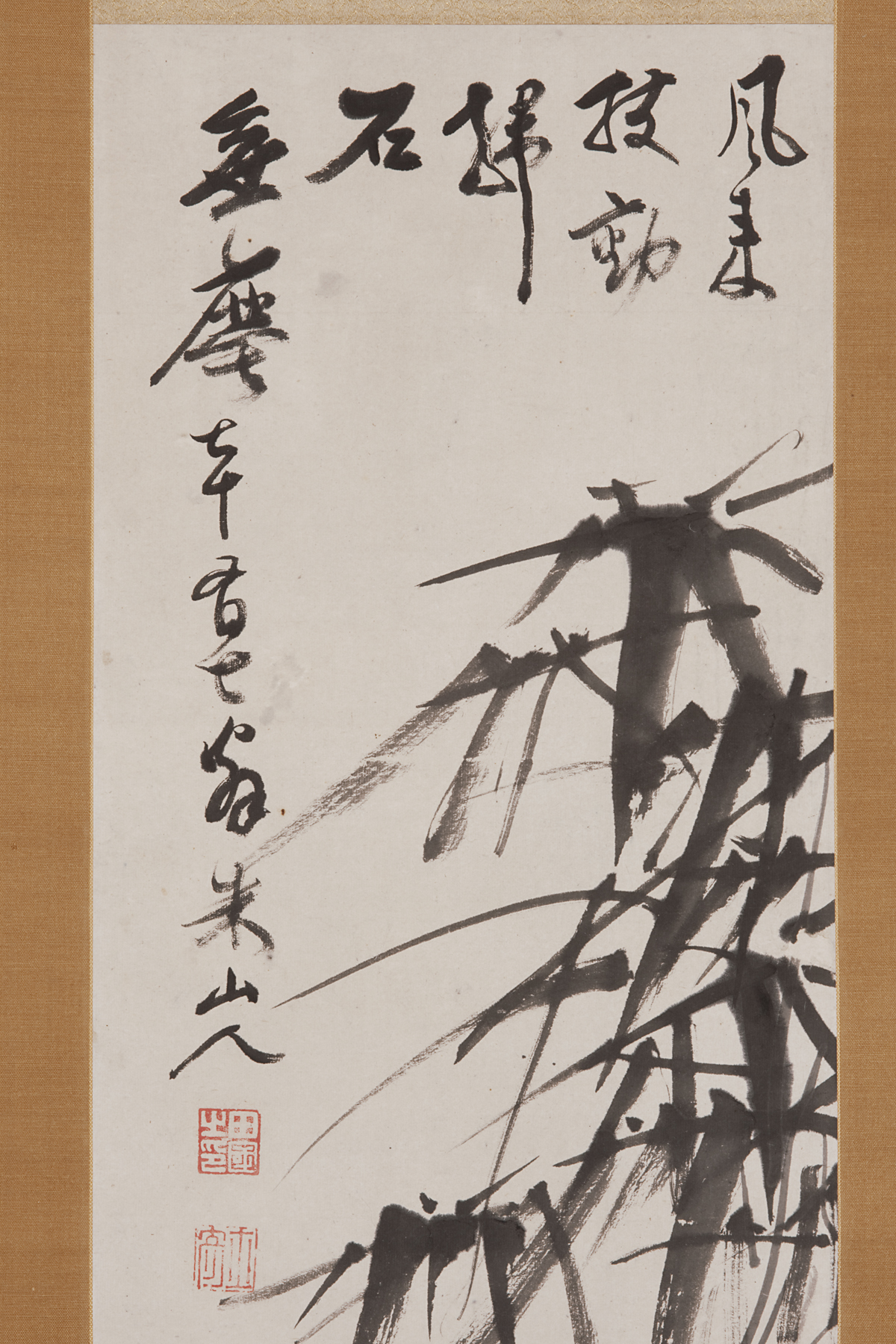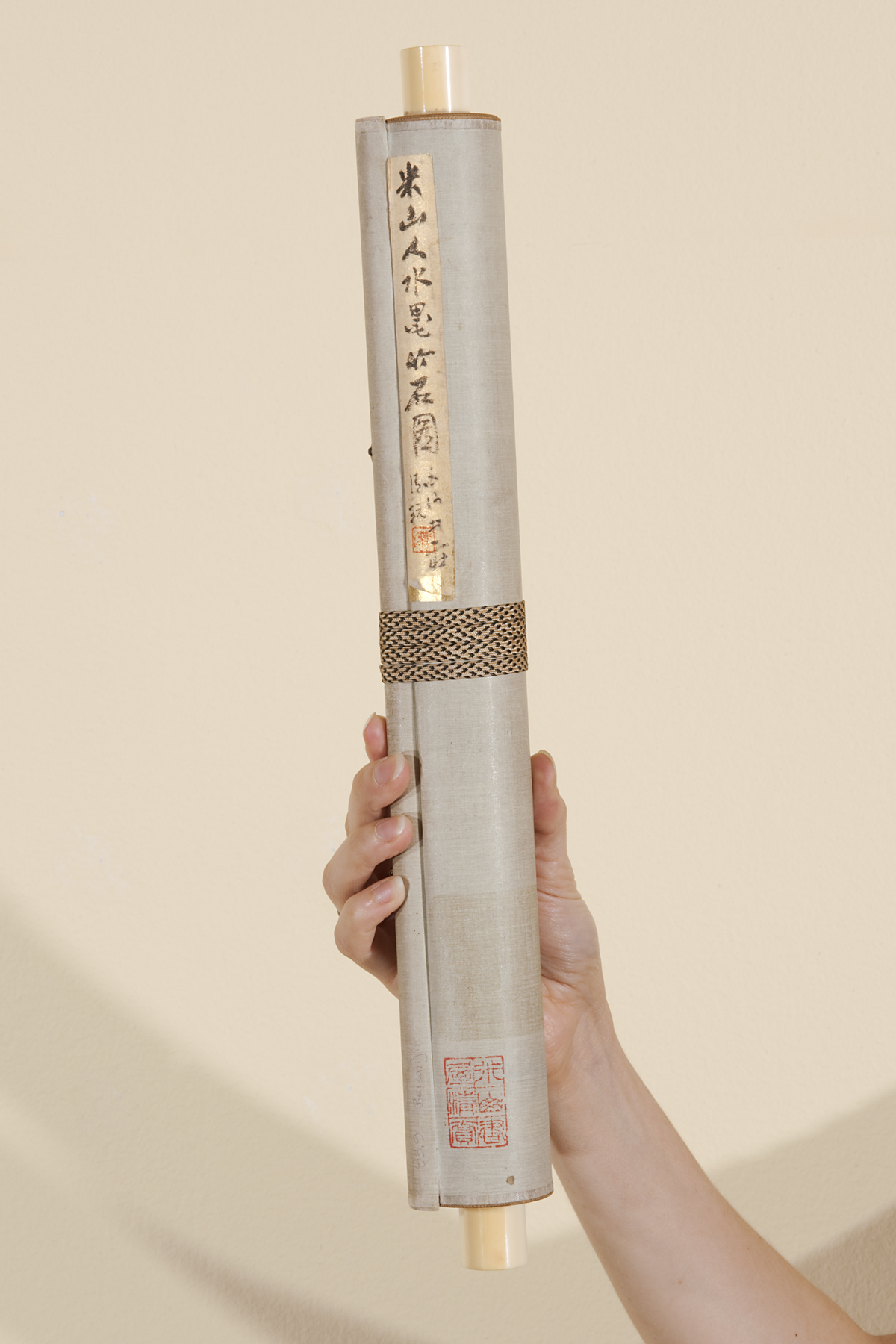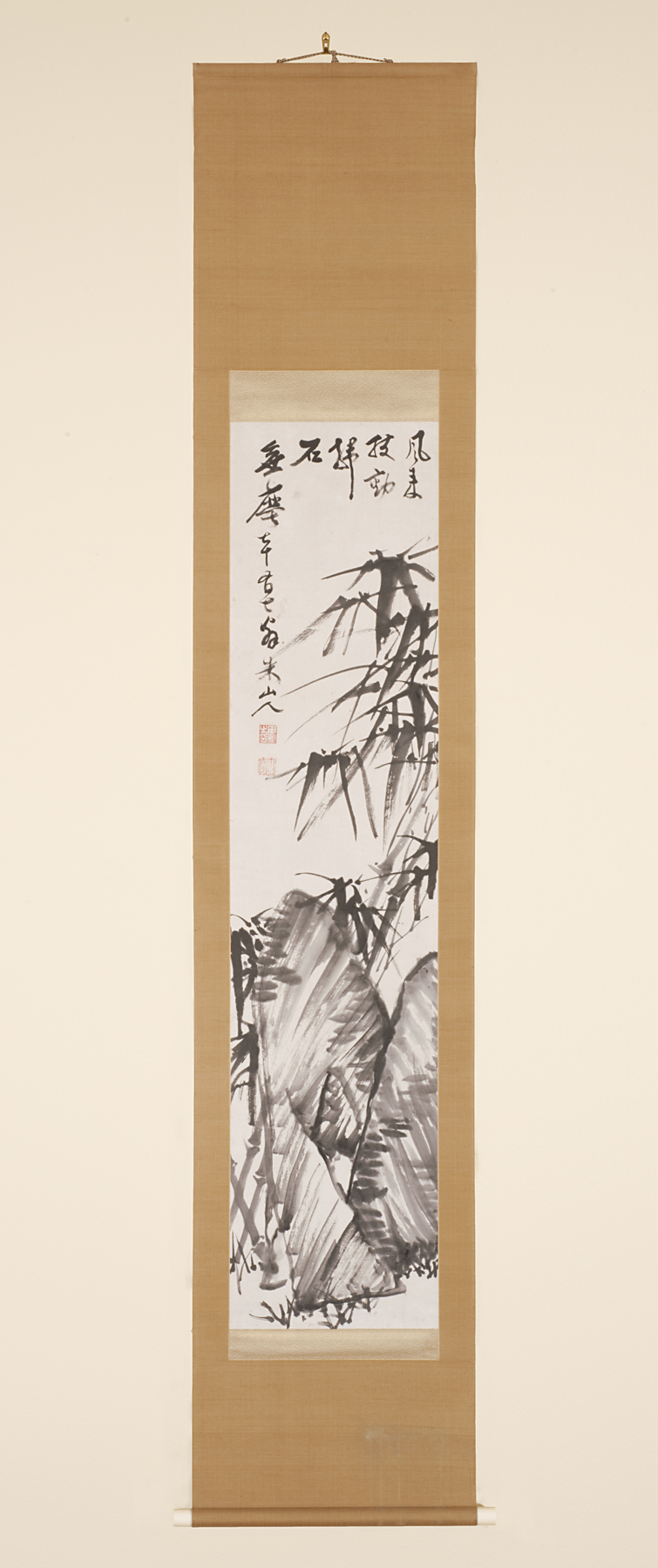Bamboo and Rocks, Okada Beisanjin
Artwork Overview
Okada Beisanjin, artist
1744–1820
Bamboo and Rocks,
late 1700s–early 1800s, Edo period (1600–1868)
Where object was made: Japan
Material/technique: ink; paper
Dimensions:
Image Dimensions Height/Width (Height x Width): 120.6 x 27.6 cm
Image Dimensions Height/Width (Height x Width): 47 1/2 x 10 7/8 in
Mount Dimensions (Height x Width x Depth): 180 x 37.5 cm
Mount Dimensions (Height x Width x Depth): 70 7/8 x 14 3/4 in
Image Dimensions Height/Width (Height x Width): 120.6 x 27.6 cm
Image Dimensions Height/Width (Height x Width): 47 1/2 x 10 7/8 in
Mount Dimensions (Height x Width x Depth): 180 x 37.5 cm
Mount Dimensions (Height x Width x Depth): 70 7/8 x 14 3/4 in
Credit line: Anonymous gift in honor of Professor Stephen Addiss
Accession number: 1983.0009
Not on display
If you wish to reproduce this image, please submit an image request





